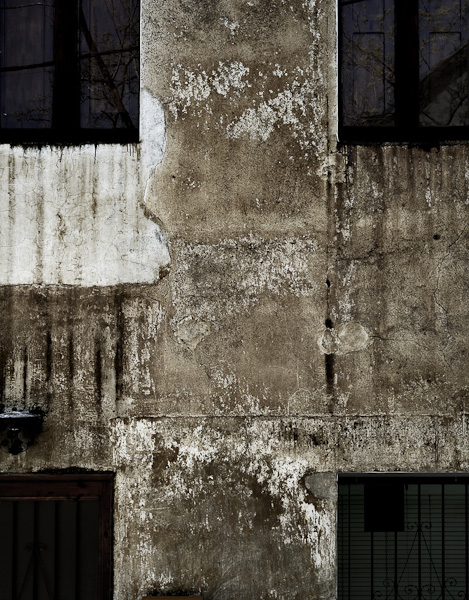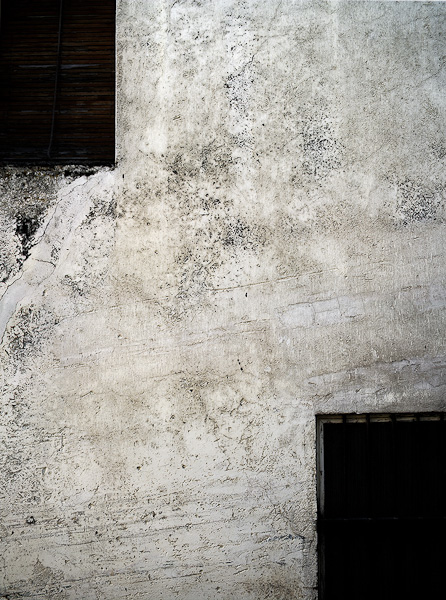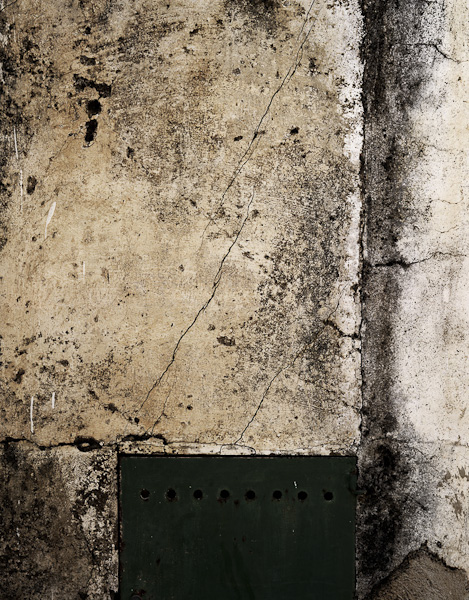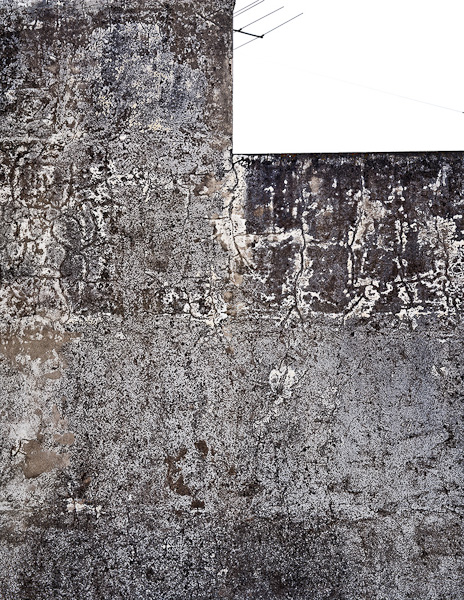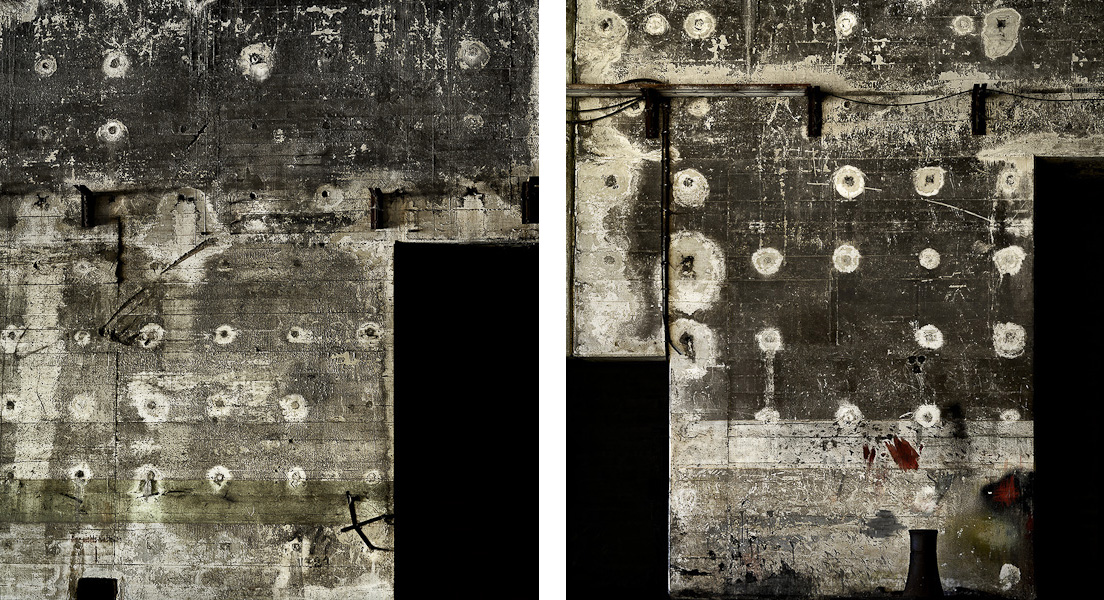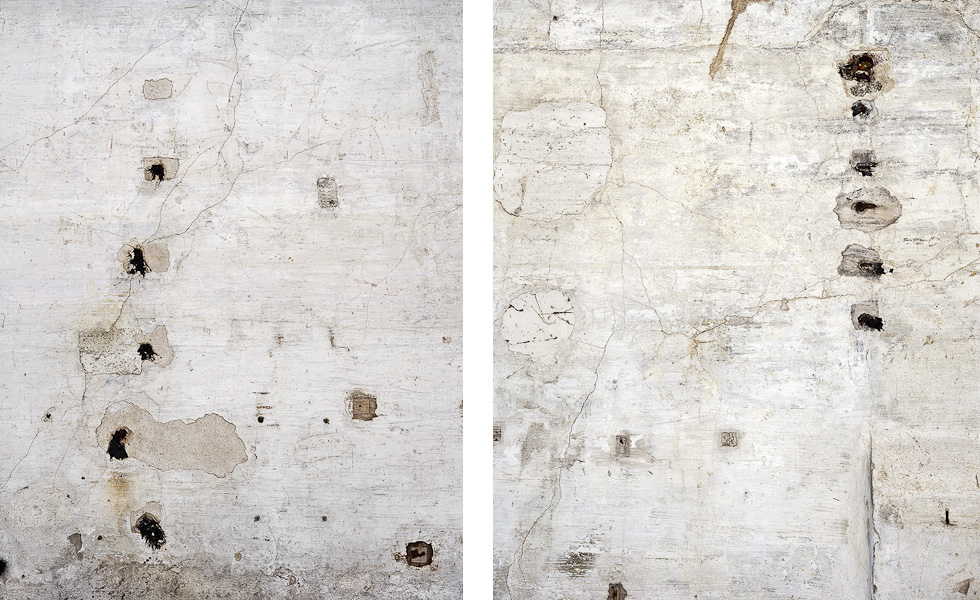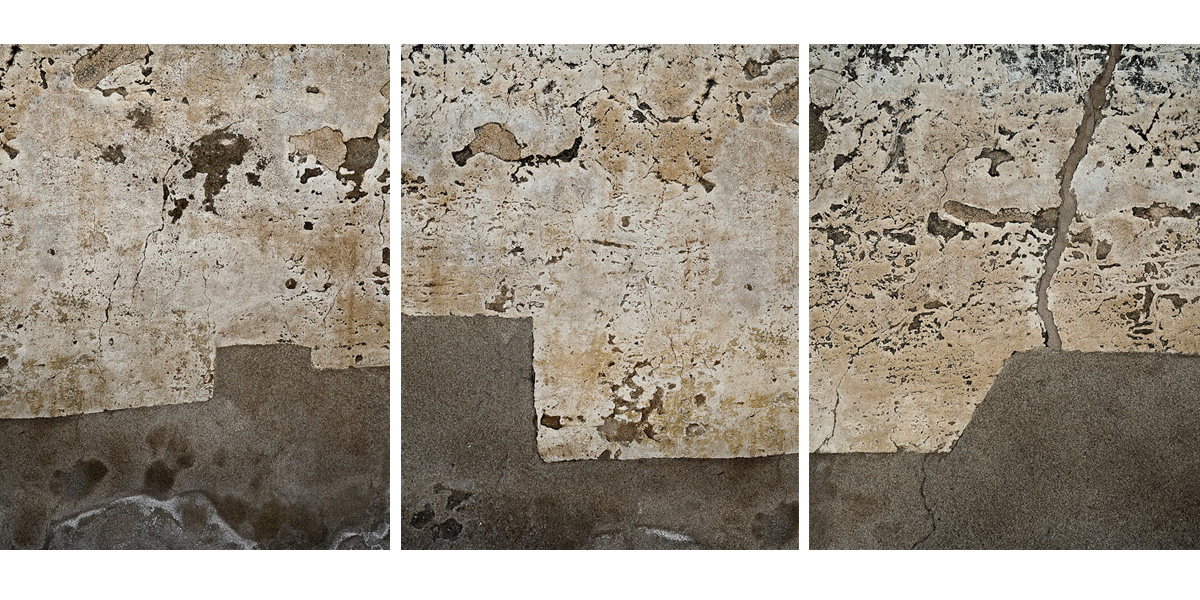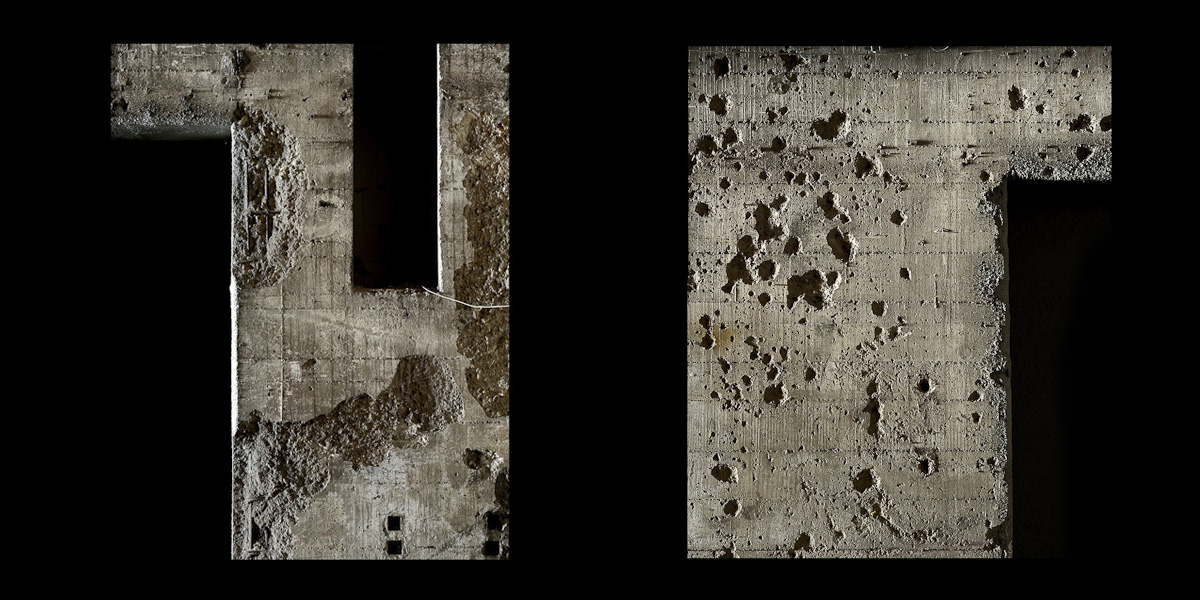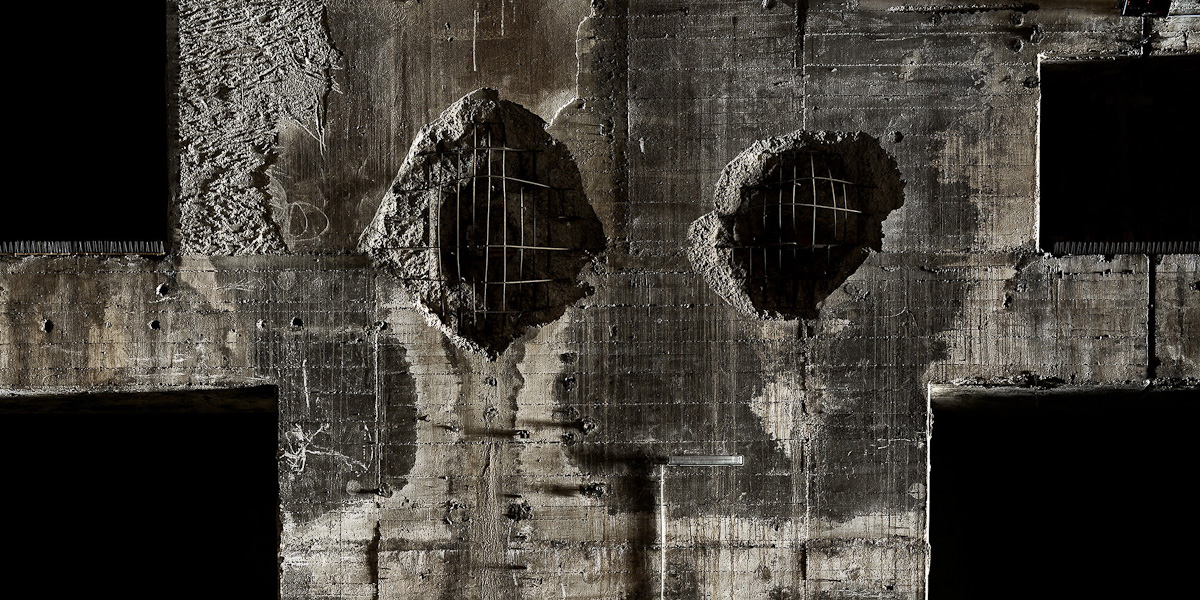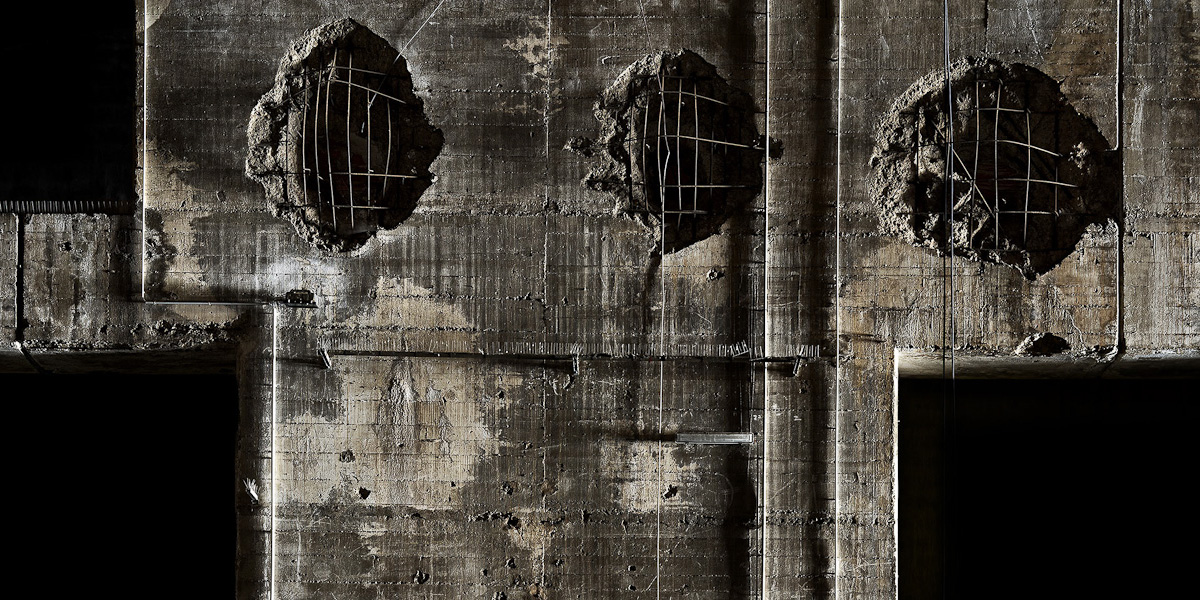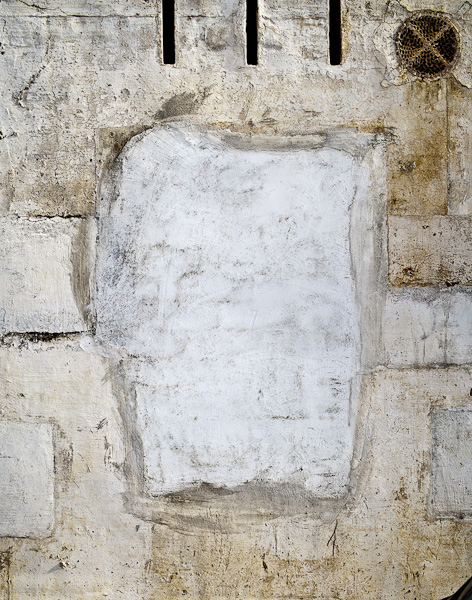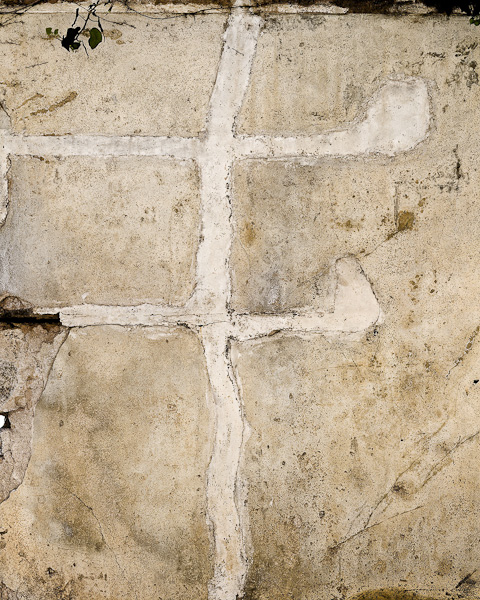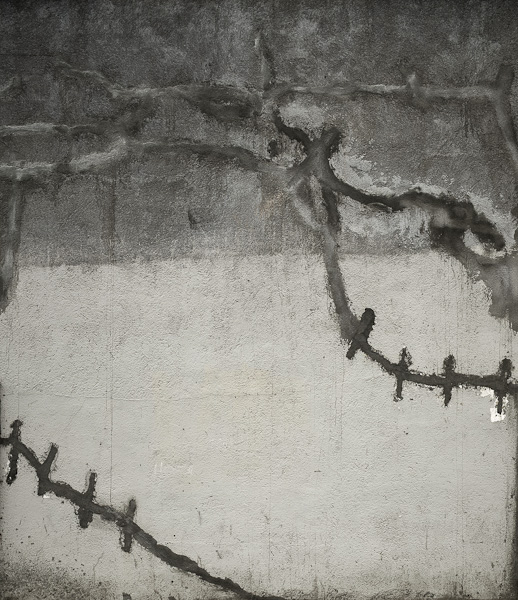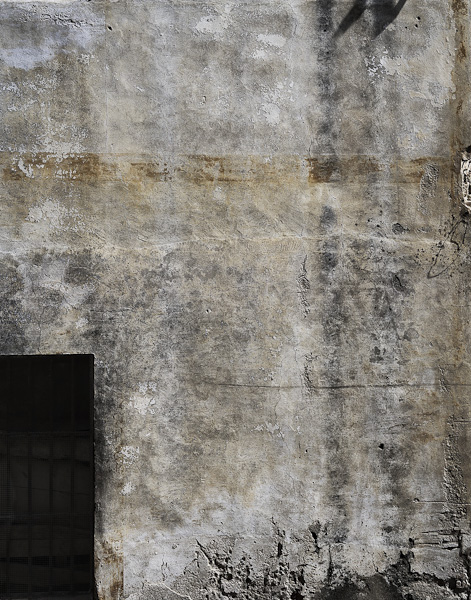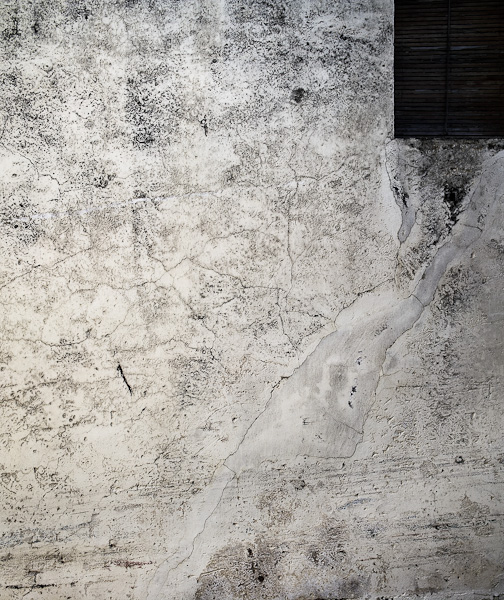Murmurs
Our gaze lingers on the wall in a quasi tactile way and the camera is employed as a collector of information – a sort of a paper sheet rubbed with a pencil to make the underlying textures, form and colors visible. Further than re-presenting the images in question, that is to say, further than fostering the photograph as a window to another reality, it presents it anew, as an independent and self-sufficient object.
We shoot pictures not as a hunter (Cartier-Bresson), who points his weapon at anything that moves before him, neither as a fisherman (Robert Doisneau), but as a collector who fills his camera with the objects he encounters on his way, fearing that they would otherwise be lost. We perceive the wall as a receptacle of information. In the same way that a record contains in his grooves all the necessary information that allows us to listen to a melody played before, the walls of Adrià Goula register the history that has constituted them materially. We do not have a decoder to reproduce what once happened, but what we can test is that, effectively, this information is contained here. We photograph to accumulate this information, as well as to ensure we will not lose it. We save it with all its particularities, details, imperfections, to testify whether it will murmur something to us with the passage of time.

